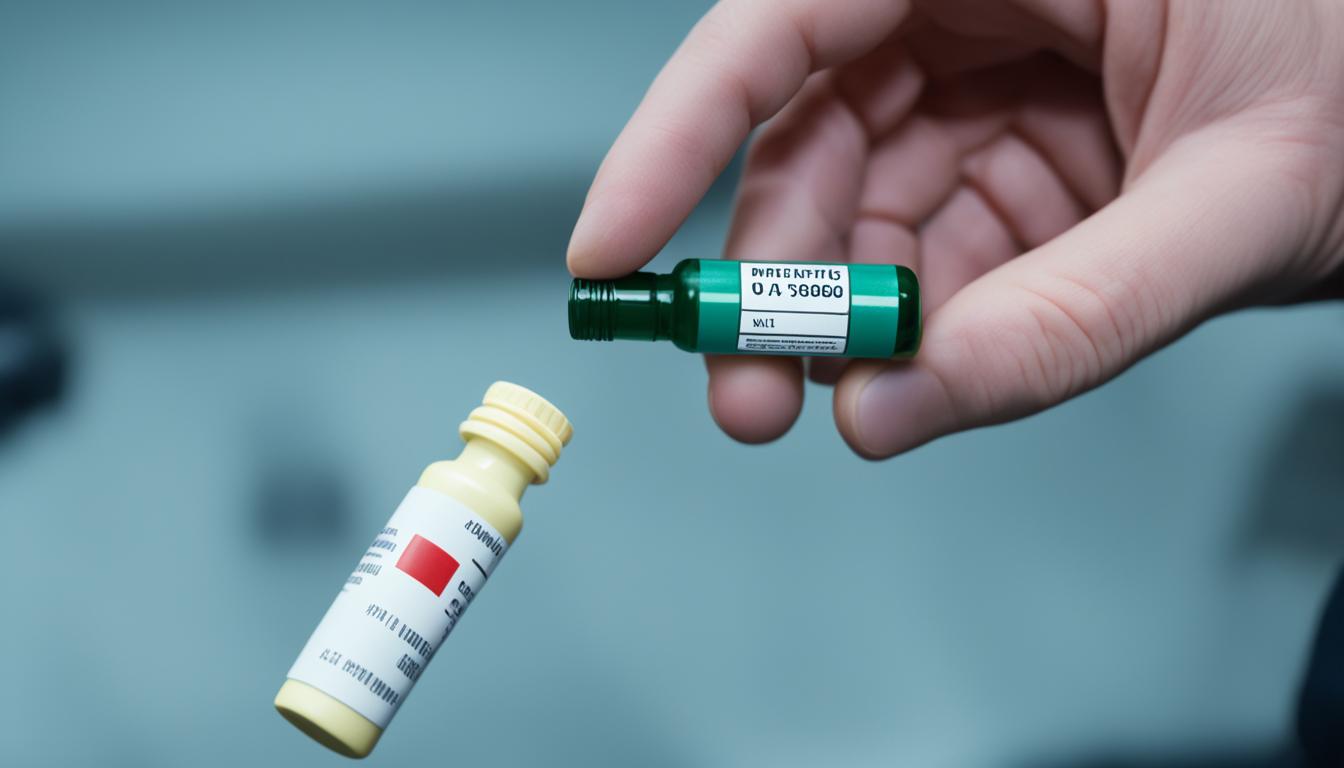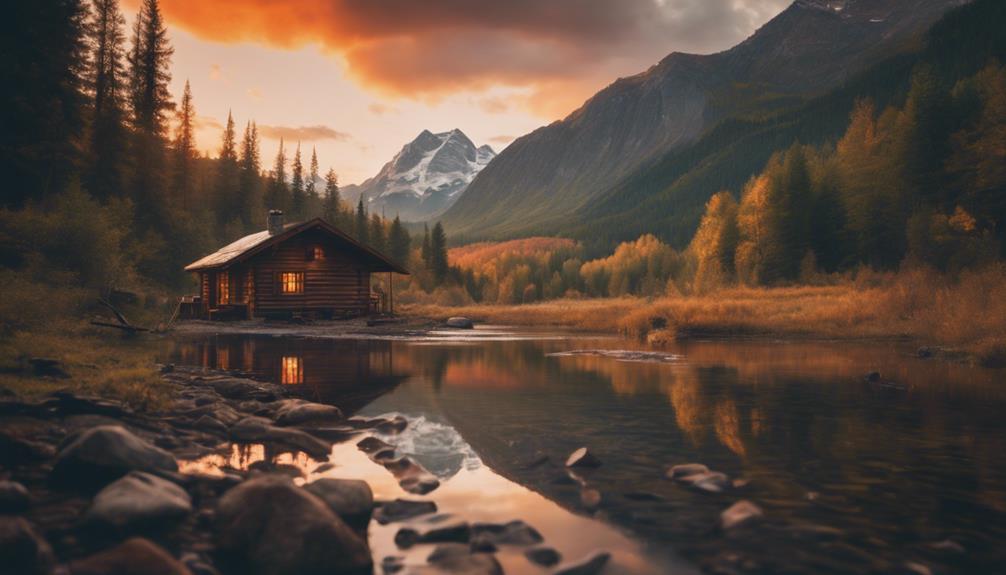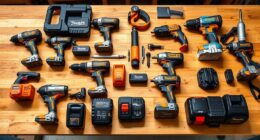To build a safe room for your home, start by choosing a secure location away from windows and exterior walls. Use reinforced concrete or steel for walls and install high-security entry doors. Make certain to stock the room with essential supplies like water, nonperishable food, and a medical kit. Incorporate effective ventilation and communication systems for longer stays. Evaluate local threats to tailor your design for maximum safety. Budget appropriately, considering installation and materials. Regular maintenance is key to keeping your safe room ready. There's much more you can learn to guarantee your family's ultimate refuge. It’s also important to have a foolproof family evacuation plan in place in case the safe room is compromised. Practice regular drills and ensure everyone knows their roles and responsibilities. Consider investing in a backup power source and communication devices to maintain contact with emergency services if needed. By taking these steps, you can ensure that your safe room is truly a refuge for your family in times of crisis.
Key Takeaways
- Assess available space and choose a secure location for the safe room, ideally away from windows and exterior walls.
- Follow FEMA guidelines to ensure the safe room withstands extreme weather and protects against threats effectively.
- Incorporate high-security features such as reinforced walls, secure entry doors, and emergency communication systems for maximum safety.
- Stock the safe room with essential emergency supplies, including water, nonperishable food, and a medical kit for prolonged stays.
Understanding Safe Rooms
Safe rooms are specialized structures that protect you and your loved ones from extreme weather events, guaranteeing safety and security when it matters most. These fortified spaces are designed based on FEMA safe room guidelines, allowing for effective protection in extreme conditions such as tornadoes and hurricanes.
When it comes to safe room design, it's essential to take into account the materials and construction methods used. You'll want to verify your safe room can withstand winds of up to 250 mph and resist damage from flying debris.
If you have an existing home, you can retrofit a safe room to meet your needs. This can be done by integrating a space within your home or opting for a stand-alone above-ground shelter.
Important features for your safe room include a high-security entry door, emergency supplies, communication systems, and proper ventilation to maintain air quality during prolonged stays.
Planning Your Safe Room

When planning your safe room, assess available space and determine its primary purpose to make certain it meets your family's needs during emergencies. Consider whether it will serve as a storm shelter, a security refuge, or both.
Choose a location that's away from windows and exterior walls, making certain it's easily accessible from bedrooms. This quick access can be vital during an emergency. Don't forget to consult local building codes and regulations to make certain compliance while creating a detailed blueprint outlining the safe room's dimensions and construction materials.
Incorporate high-security features like reinforced walls, secure entry doors with multiple locking points, and ballistic protection materials to enhance safety against forced entry and debris. Additionally, plan for essential components to make your safe room functional:
| Component | Purpose | Notes |
|---|---|---|
| Communication System | Stay connected during emergencies | Include a battery backup |
| Emergency Supplies | Meet basic needs | Stock food, water, and first aid kits |
| Ventilation | Make certain air quality | Install a manual or battery-operated fan |
Assessing Threats and Risks

Identifying potential threats and risks is essential for designing an effective safe room that meets your family's specific safety needs. Start by conducting a thorough threat assessment to pinpoint the risks relevant to your home, such as natural disasters like tornadoes or hurricanes, and potential criminal activity.
Evaluate the likelihood of these threats in your area by considering local crime rates and historical weather patterns. This will help you tailor your safe room's design to address the most pressing risks.
Next, assess your home's vulnerabilities, including how intruders might gain access. This helps you enhance your safe room's security features, ensuring it's equipped with appropriate materials to withstand forced entry.
Familiarize yourself with UL 752 ballistic levels to determine necessary protection measures—this knowledge is vital for maintaining a safe environment.
Choosing the Right Location

When it comes to choosing the right location for your safe room, you'll want to assess the space available in your home.
Consider placing it in an interior area, like a basement or closet, where it's protected from external threats.
Also, make sure it's easily accessible from bedrooms so everyone can reach it quickly during an emergency.
Assessing Space Availability
Choosing the right location for your safe room requires careful evaluation of available space to guarantee it meets safety and accessibility needs. Start by ensuring that the space is large enough to accommodate everyone during an emergency. FEMA recommends a minimum of 3 square feet per person for tornado safe rooms.
As you evaluate space availability, pick a location away from windows and exterior walls to enhance safety. Ideally, your safe room must be situated in a central part of your home, making it easily accessible for all family members, especially during nighttime emergencies.
You should also examine the existing structural integrity of the chosen area, particularly if you're retrofitting an existing room. This evaluation is essential for ensuring that the room can withstand severe weather and complies with local building codes and FEMA guidelines.
Common interior locations include basements, bathrooms, and closets, as these areas often provide necessary amenities and are less vulnerable to external threats. By carefully evaluating space availability, you can create a safe room that effectively serves its purpose when it matters most.
Ideal Placement Considerations
To guarantee your safe room is effective, place it away from windows and exterior walls to protect against debris and unauthorized entry during emergencies.
Here are some ideal placement considerations to keep in mind:
- Proximity to Bedrooms: Locate your safe room near bedrooms for quick access during nighttime emergencies. This allows family members to reach it swiftly.
- Interior Locations: Common choices include basements, bathrooms, and closets. Bathrooms are particularly beneficial as they provide essential amenities like toilets and a water supply.
- Space for Occupants: Verify the size of the safe room accommodates everyone who might need shelter. FEMA recommends at least 3 square feet per person for tornado-focused shelters.
- Accessibility: Consider placing the safe room with shared walls to enhance safety and facilitate quick entry while minimizing exposure to severe weather conditions.
Essential Materials and Features

When building your safe room, you'll want to focus on the right construction materials and security features to guarantee maximum protection.
Consider incorporating essential emergency supplies that can support you during extended periods of sheltering.
Let's explore these critical components to create a reliable safe haven.
Recommended Construction Materials
Reinforced concrete and steel are essential materials that provide the strength and durability needed for a safe room to withstand extreme weather and forced entry.
When constructing your safe room, consider the following recommended materials and features:
- Reinforced Concrete: Use reinforced concrete for walls, designed to resist winds of up to 250 mph, guaranteeing a sturdy refuge during storms.
- Ballistic Panels: Incorporate ballistic panels made from fiberglass or Kevlar to protect against firearm threats while maintaining structural integrity.
- High-Security Entry Door: Install a high-security entry door made of 14-gauge steel, equipped with a three-point locking system to prevent unauthorized access.
- Blast-Resistant Windows: If you include windows, make certain they're ballistic and blast-resistant, following UL 752 ballistic levels to ensure visibility and protection.
Additionally, don't forget to integrate proper ventilation systems to maintain air quality during extended stays.
Provisions for emergency communication devices and backup power sources will enhance the functionality of your safe room, guaranteeing it serves as a reliable refuge when you need it most.
Security Features Overview
Incorporating essential security features is critical for creating a safe room that effectively protects against both natural disasters and potential intruders.
Start with high-security entry doors made from reinforced materials and equipped with multiple locking points to withstand forced entry attempts. For the walls, consider using reinforced concrete or steel; adding ballistic panels made of fiberglass or Kevlar enhances protection against firearms and debris.
Don't overlook the importance of ballistic and blast-resistant windows. These features allow visibility and light while providing key defense against threats.
Additionally, a reliable communication system, such as landlines or two-way radios, is fundamental. This guarantees you can contact emergency services during a crisis, keeping you connected and informed.
While security features are important, remember to plan for emergencies by storing adequate emergency supplies. You should have a minimum of three gallons of water per person and nonperishable food items readily available.
This preparation will support you and your loved ones during extended stays in your safe room. By prioritizing these security features, you'll create a sanctuary that provides peace of mind and safety.
Essential Emergency Supplies
To guarantee your safe room is fully prepared for emergencies, stock it with essential supplies that support you and your loved ones during extended stays. A well-equipped safe room can make all the difference in stressful situations.
Here's a list of vital items to include:
- Water: Store a minimum of three gallons of water per person. This guarantees everyone stays hydrated during an emergency.
- Nonperishable Food: Pack an emergency kit with nonperishable food items, like Mountain House meals. These require minimal preparation and provide long-lasting nutrition.
- Medical Kit: Equip your safe room with a small medical kit containing basic first aid supplies. This will help you address injuries that may occur during an emergency.
- Communication System: Install a backup communication system, like a landline or two-way radios, to maintain contact with emergency services and family members.
Additionally, guarantee your safe room has proper ventilation to maintain air quality, especially during prolonged stays. Being well-prepared with these essential supplies will provide peace of mind and safety for you and your loved ones.
Installation Best Practices

Choosing experienced contractors guarantees your safe room's high-security features are installed correctly and meet local building codes and FEMA guidelines. They'll make certain that the concrete walls are properly reinforced to withstand various threats, adhering to the installation best practices vital for effective Emergency Management.
Start by selecting a location for your safe room that's away from windows and exterior walls. Ideally, it should be integrated with the rest of your house to enhance accessibility during emergencies. Following a detailed blueprint is essential; it should outline the dimensions and materials to guarantee your safe room meets your household's specific needs.
Incorporate essential components like a backup power source, communication systems, and emergency supplies, including food, water, and medical kits. These additions not only prepare you for extended stays but also strengthen your overall safety.
Emergency Preparedness Strategies

Building a safe room is just the first step; developing effective emergency preparedness strategies guarantees you and your family can respond quickly and efficiently when disaster strikes. Here are four essential strategies to enhance your readiness:
- Create an Emergency Action Plan: Outline specific guidelines for when to lock the safe room door and assign roles to each family member. This guarantees everyone knows their responsibilities during a crisis.
- Stock Up on Supplies: Equip your safe room with at least three gallons of water per person and nonperishable food items. Don't forget a small medical kit for basic first aid needs.
- Establish Communication: Incorporate a dedicated communication device, such as a landline or two-way radios, in your safe room. This will help you maintain contact with authorities and receive updates during emergencies.
- Regularly Review and Rehearse: Schedule regular drills to familiarize everyone with the emergency plan and safe room contents. This practice will enhance your family's overall preparedness and confidence when sheltering in place.
Budgeting for Your Safe Room

Budgeting for your safe room requires careful consideration of both initial construction costs and ongoing maintenance expenses. The cost of constructing a panic room can range from $9,000 to $40,000, depending on size and security features, with installation costs adding another $3,000 to $20,000.
If you're looking to save, consider a pre-fabricated unit, which can be more affordable, starting at just a few thousand dollars. When budgeting for your safe room, don't forget to account for additional features like ballistic windows, as these can greatly increase your overall expenses.
For financial assistance, look into FEMA's Hazard Mitigation Assistance grants. These may help cover some of your costs, so reach out to your State Hazard Mitigation Officer to explore your options.
Maintenance and Upkeep

To guarantee your safe room remains effective, regular maintenance and upkeep are essential for peak security and functionality. By prioritizing these tasks, you can ascertain your safe room is always ready for emergencies.
Here are four key areas to focus on:
- Structural Inspections: Conduct inspections at least twice a year to check the integrity of walls, doors, and windows. Look for any signs of damage that could compromise safety.
- Emergency Kit Maintenance: Keep a well-stocked emergency kit. Replace expired food and medications annually, and routinely check the functionality of communication devices and backup power sources.
- Ventilation Systems: Ensure your ventilation systems are operational. Periodically test air circulation and filters to maintain air quality, especially during extended stays.
- Drainage and Waterproofing: Inspect drainage systems and waterproofing to prevent moisture buildup and flooding, particularly in areas prone to heavy rainfall.
Keep thorough documentation of all maintenance and inspections, alongside a detailed inventory of supplies. This practice enhances preparedness and ensures your safe room meets all safety standards.
Resources for Safe Room Building

Accessing reliable resources is vital for constructing an effective safe room that meets safety standards and provides ideal protection. Start by consulting the FEMA P-320 document, which offers extensive plans and guidelines for building safe rooms that can accommodate up to 16 people.
It's important to adhere to local building codes and regulations, guaranteeing your safe room complies with FEMA criteria for life-safety protection against extreme weather.
The National Storm Shelter Association is another valuable resource, maintaining a list of reputable manufacturers for pre-fabricated safe rooms. This can save you time and ensure you choose options that meet safety standards.
Don't overlook financial support; programs like SBA disaster assistance loans can cover up to 20% of your safe room costs, making your project more affordable.
Additionally, check with local Emergency Management Offices. They can provide information on grants and other financial support for safe room projects.
Conclusion
Building a safe room isn't just about bricks and mortar; it's your ultimate refuge against unforeseen threats.
By understanding your specific risks and carefully planning your space, you create a sanctuary that brings peace of mind.
While some might think safe rooms are only for the wealthy, anyone can implement protective strategies within their budget.
Remember, the true value lies not in the room itself, but in the security and confidence it provides for you and your loved ones.










